Three Phase Circuits Chapter Objectives: Be familiar with

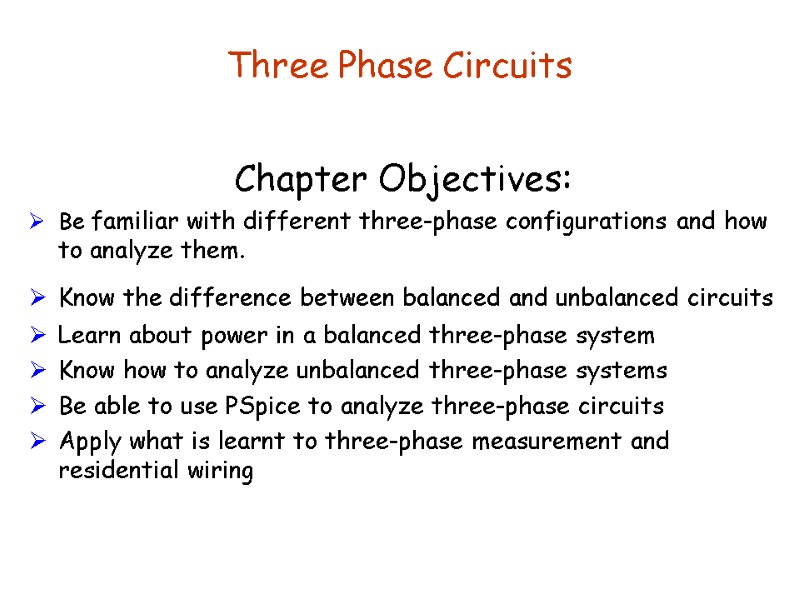
Three Phase Circuits Chapter Objectives: Be familiar with different three-phase configurations and how to analyze them. Know the difference between balanced and unbalanced circuits Learn about power in a balanced three-phase system Know how to analyze unbalanced three-phase systems Be able to use PSpice to analyze three-phase circuits Apply what is learnt to three-phase measurement and residential wiring

Power in a Balanced System The total instantaneous power in a balanced three phase system is constant.
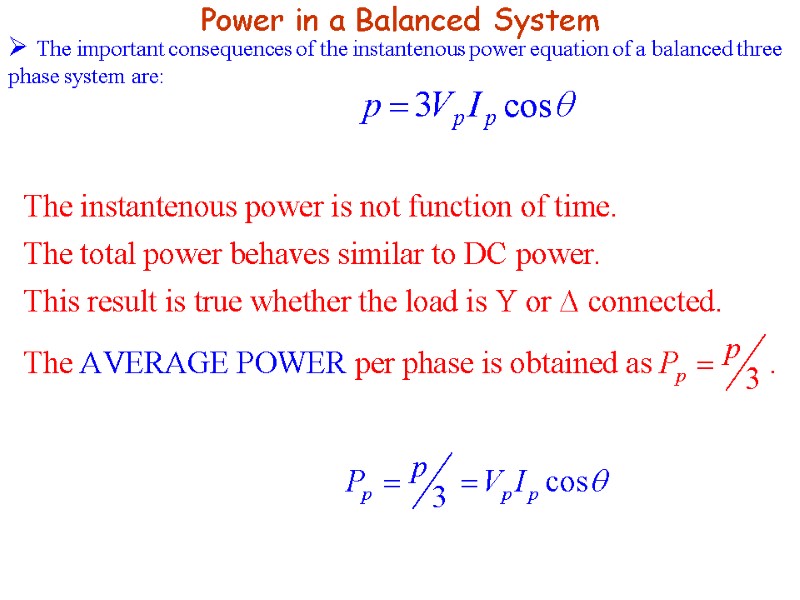
Power in a Balanced System The important consequences of the instantenous power equation of a balanced three phase system are:
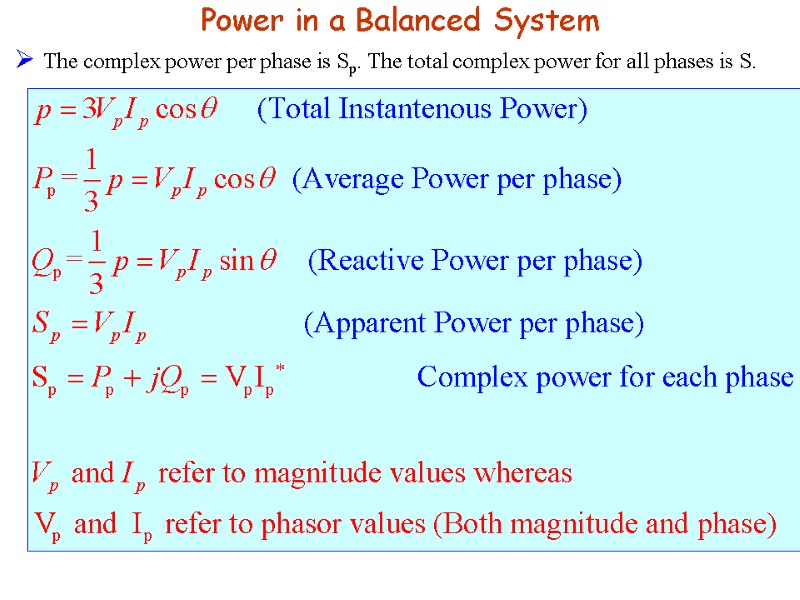
Power in a Balanced System The complex power per phase is Sp. The total complex power for all phases is S.
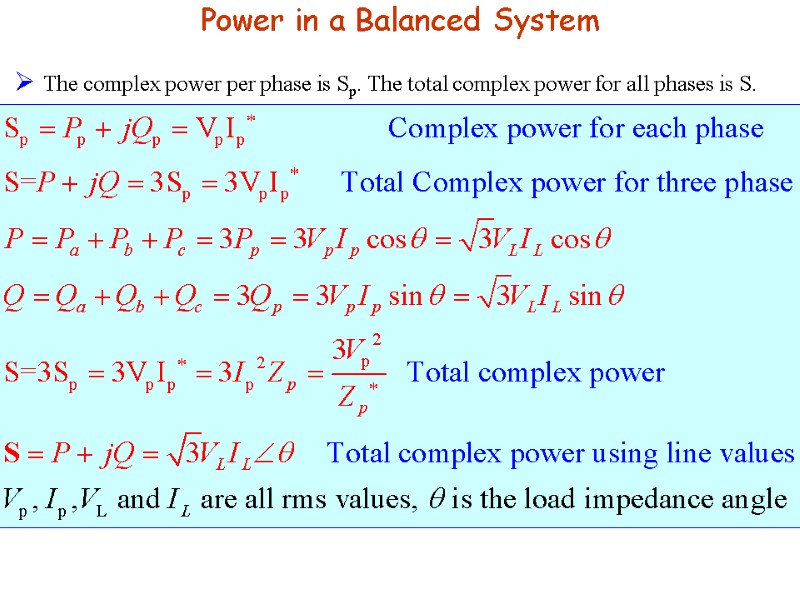
Power in a Balanced System The complex power per phase is Sp. The total complex power for all phases is S.
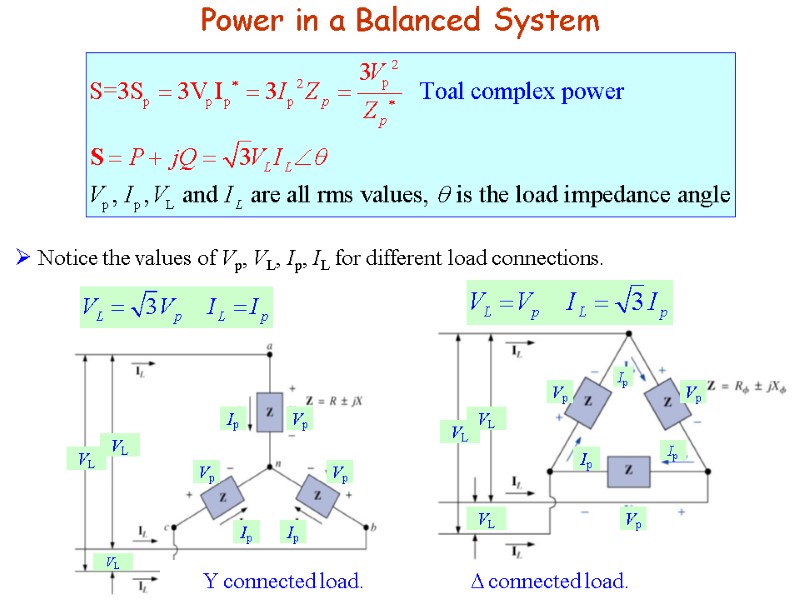
Power in a Balanced System Notice the values of Vp, VL, Ip, IL for different load connections. Y connected load. Δ connected load.
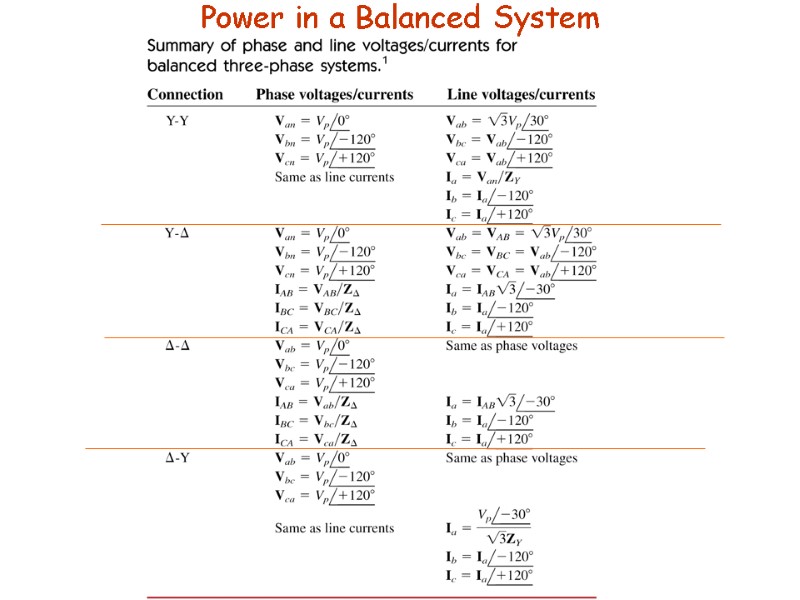
Power in a Balanced System
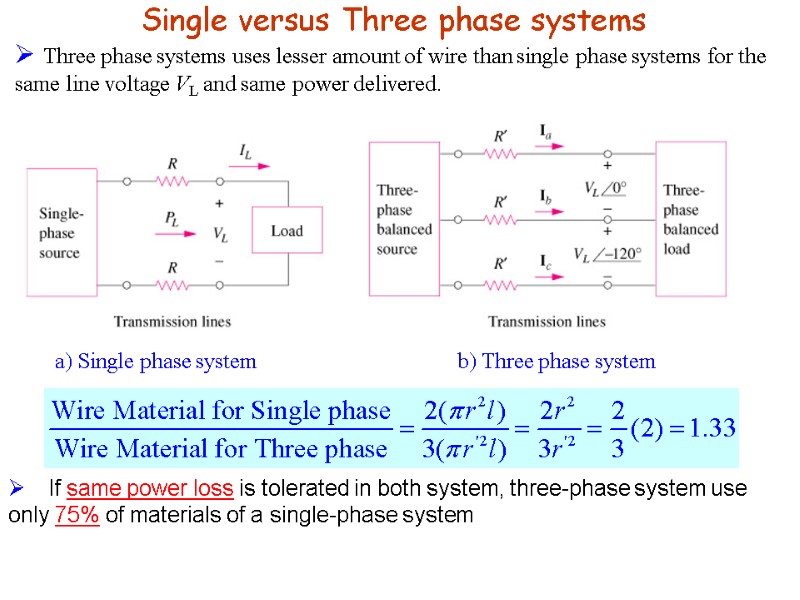
Single versus Three phase systems Three phase systems uses lesser amount of wire than single phase systems for the same line voltage VL and same power delivered. a) Single phase system b) Three phase system If same power loss is tolerated in both system, three-phase system use only 75% of materials of a single-phase system
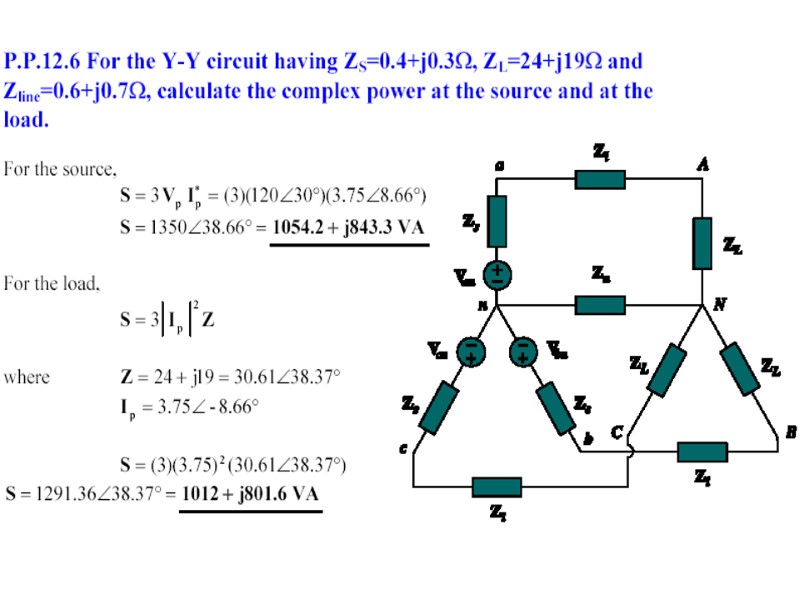
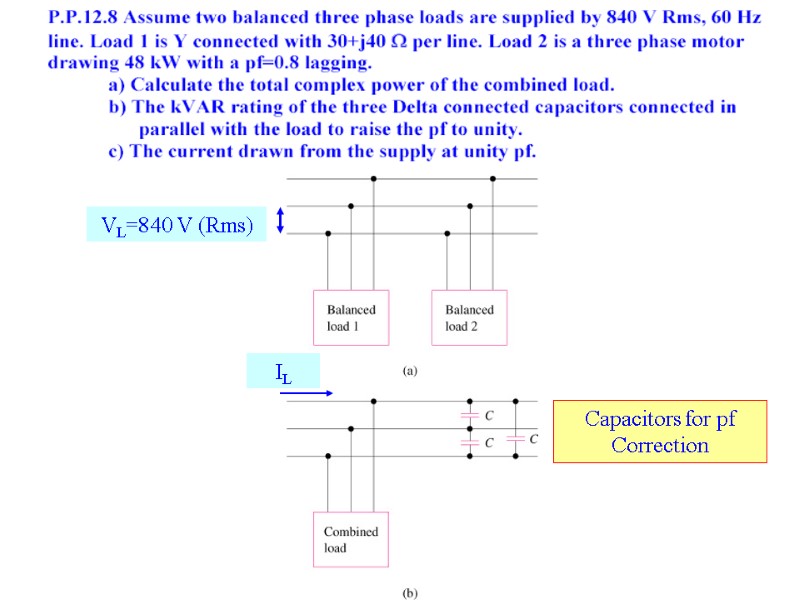
VL=840 V (Rms) Capacitors for pf Correction IL


Unbalanced Three Phase Systems An unbalanced system is due to unbalanced voltage sources or unbalanced load. In a unbalanced system the neutral current is NOT zero. Unbalanced three phase Y connected load. Line currents DO NOT add up to zero. In= -(Ia+ Ib+ Ic) ≠ 0
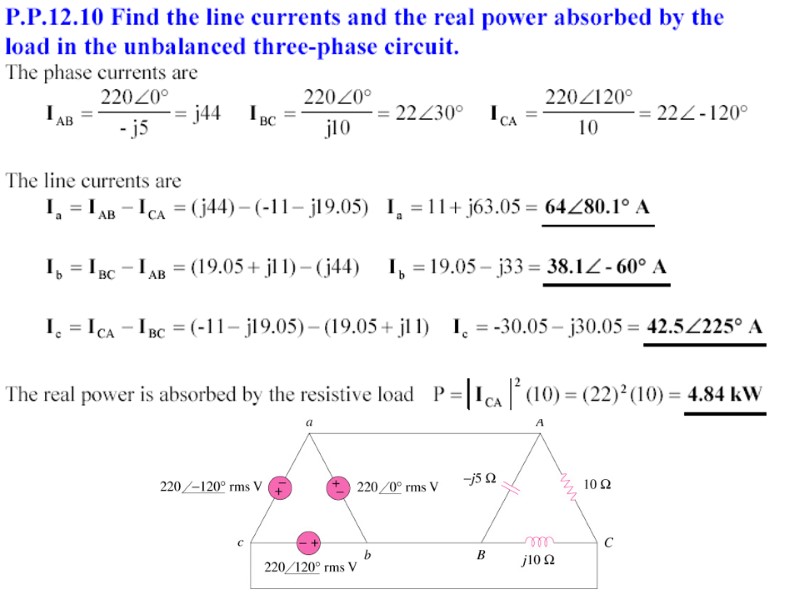
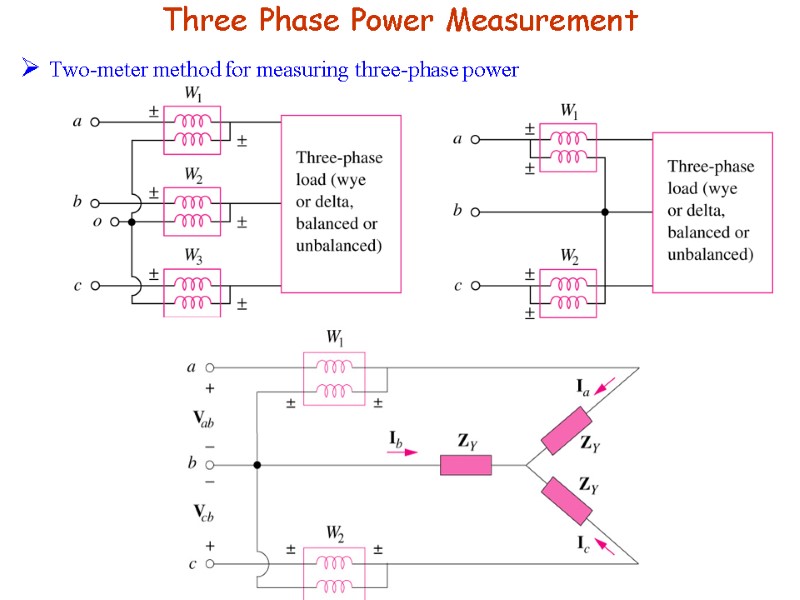
Three Phase Power Measurement Two-meter method for measuring three-phase power

Residential Wiring Single phase three-wire residential wiring
13366-three-phase+circuits-2.ppt
- Количество слайдов: 15

